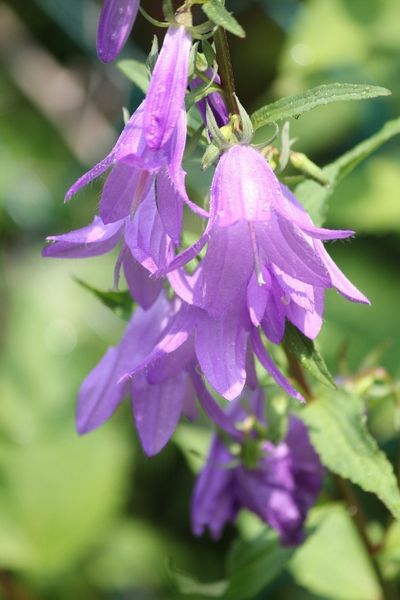What is Creeping Bellflower?
It’s said that the Old World fairytale character Rapunzel got her name from creeping bellflower after her father stole a plant from a witch’s magic garden. The witch gets revenge on the father by hiding Rapunzel away in a tower. The plant was trouble then, and it’s trouble now for anyone who gets it in their garden. Creeping bellflower is a perennial that thrives in moist soil but tolerates nearly any soil and either sun or shade. The plant is easily identified by its heart-shaped leaves and stalks of drooping, bell-shaped blooms of lavender-blue. It sounds innocent, but an extensive root system turns any attempt at creeping bellflower eradication into a major challenge. If that’s not enough, creeping bellflower also regenerates by seed. In fact, the plants spread by sending down roots into every nook and cranny of the garden, including secluded shady spots, and produce between 3,000 and 15,000 seeds every year. It’s easy to see how this invasive week can quickly get out of control.
How to Get Rid of Creeping Bellflower
Creeping bellflower eradication without toxic chemicals is always worth a try, and a sturdy shovel is your best weapon. Dig the plant out, but be sure to dig at least 6 to 8 inches (15-20 cm.) deep and several inches (7.5 cm.) around the plant. If you leave any tiny chunks of the tuber-like roots, the plant will regrow. You may be able to get the upper hand by smothering the plant, which is generally possible only if creeping bellflower is limited to small patches. Cover the patch with several layers of newspaper, then top the paper with a generous layer of soil and mulch. Deprived of light, the plant will eventually die. Pulling is generally ineffective, although you may prevent reseeding. You may get the shallow, thread-like roots, but the plant will quickly rebound and send out new growth from the deeper roots. Mow or deadhead creeping bellflower consistently to prevent reseeding. If all else fails, creeping bellflower in gardens may warrant careful application of herbicides. Don’t waste your money on 2,4-D because creeping bellflower tends to be resistant to that chemical. If you have creeping bellflower plants in your lawn, you can spray them with an herbicide containing triclopyr, such as Ortho Weed-B-Gone. Triclopyr is a broadleaf herbicide that won’t harm grass, but it will kill garden plants. Products containing glyphosate may be effective but keep in mind that the chemical kills any broad-leaved plant it touches. If this is a concern, apply glyphosate carefully to the leaves with a brush or sponge. Otherwise, spray the product directly on the plant. Herbicides are most effective when temperatures are between 60 and 85 degrees F. (15-29 C.). University of Minnesota Extension says that late spring and early fall are the best times to apply glyphosate. Choose a warm, non-windy day when no rain is expected for at least 24 hours. You may have to use a product several times to completely eradicate creeping bellflower plants – reapply every week to 10 days until the roots no longer send up new growth. Store remaining herbicides in their original container and out of the reach of children. Note: Any recommendations pertaining to the use of chemicals are for informational purposes only. Specific brand names or commercial products or services do not imply endorsement. Chemical control should only be used as a last resort, as organic approaches are safer and more environmentally friendly.
